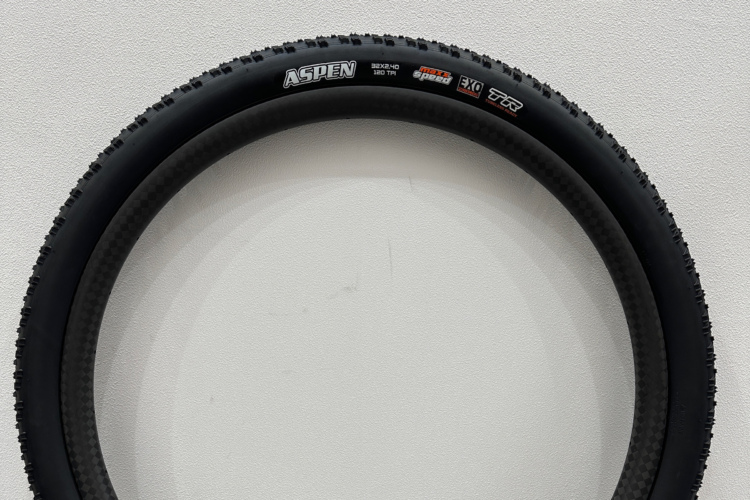I consider myself a bit old school in my gear selection. However, as an engineer by day, I find that I am always looking to gather as much data and telemetry as possible for the sheer joy of crunching numbers–a strange affliction, I know. Recently, I broke my longstanding avoidance of new technology with the purchase of Suunto’s Ambit3 Peak, thanks to a deal at a local garage sale that was just too good to pass up. Read on to see how a self-confessed simpleton’s life has been changed by wrapping his wrist in some fancy new tech.

For those of you who aren’t keen on the happenings in the world of multi-sport watches, the Ambit3 is Suunto’s latest offering in its line of watches geared towards outdoorsmen who have a multitude of hobbies but want to condense all of their telemetry needs into one device. Right out of the box, the Ambit3 allows for real-time tracking of the user’s speed, pace, distance, altitude (atmospheric and GPS-based), and barometric pressure–all while telling the time (it is a watch, after all). To expand on these GPS-centric data streams, the Ambit3 is Bluetooth+ compatible and will communicate with a whole bevy of sensors to allow for Heart Rate monitoring; cycling speed, power output, and cadence; stride length (for those who are in to this jogging nonsense); among other metrics. Now this is all well and good, but the real strength of the watch is that it can take these streams of data and convert them into useful information to be utilized by us humans.
Fit, Finish, and Feel
When you first open the box, you’ll notice an almost Apple-esque presentation, with the Ambit 3 perched upon some nifty packaging concealing the associated charging cable, quickstart guide, and (if applicable) heart rate monitor. Once freed from its cardboard confinement, the watch has a high quality feel about it, with excellent attention to detail and overall solid construction. Though it does have some heft to it, once worn for a few outings it begins to feel natural and without it, you may find yourself missing its reassuring weight wrapped around your wrist. As far as durability is concerned, I’ve bashed the watch on a number of unforgiving surfaces, but its exterior still looks as good as it did fresh from the box.

One aspect that I personally think could use a bit of work is with the feel of the control buttons on the watch body. Ergonomically, they’re set up just fine for me, but sometimes the actual pressing sensation comes off a bit vague and doesn’t register with the watch software, reminding me of the “false neutral” feel that those of you who have ridden motorcycles may be familiar with. For those without motorcycling experience, sometimes the buttons just don’t work and feel funky. The feel issue may just come down to individual tactile preferences, but I prefer a resounding “click” to a vague “squish” when it comes to buttons.

Movescount Software and Customizing the Ambit3
If I could describe Suunto’s Movescount software suite in one word, it would be “comprehensive.” If allowed two words, “staggeringly comprehensive.” Realistically, one could take the Ambit3 straight from the box, slap it on their wrist, plug in their vitals (age, weight, height) and have a perfectly-enjoyable sportwatch experience. But the Ambit3 is no simple sportwatch, but rather a fully-customizable, technologically-advanced, smartwatch filled to the absolute brim with bells and whistles. These bells and whistles, however, remain hidden until you set up your Movescount account.

Movescount is Suunto’s web-based control panel/social network for their multiple lines of smartwatches and accessories. After a simple sign up process, you’ll be presented with a veritable smorgasbord of telemetry and training options to tune your watch to be exactly what you want it to be. Additionally, and perhaps most importantly, you can sync your Strava and Movescount credentials so that everyone will know about all of your KOMs automatically, as soon as you finish your ride.
Do you mix in mountaineering with your mountain biking? There is a pre-defined set of screens tailored to mountaineering. Dabble in downhill skiing? There’s a preset of pertinent pre-programmed screens for you too. The long and short of it is, if you are active and want to be presented with quantifiable data for what you’re doing, there is an option for you and your shiny new watch. Suunto refers to these presets as “Sport Modes” in Movescount and “Exercises” on the watch. Sport Modes can be accessed by pressing the “Start/Stop” button on the watch dial and selecting “Exercises.” Naturally, I loaded mine up with Cycling, Mountain Biking, and Mountaineering to see how each preset caters to different activities.
Depending on the Exercise chosen, the Ambit3 will display a different set of telemetry and will adjust its recording frequency, GPS accuracy, and formatting accordingly. For instance, if you’re going out for a backpacking trip up a mountain, odds are that your pace will be substantially slower than if you were on a mountain bike. Knowing this, the Mountaineering preset has a longer recording interval than on the Mountain Biking preset, which serves to reduce the amount of data saved to the watch to a more efficient size.
Additionally, the displayed data will vary between different Sport Modes. For instance, the main screen on the Mountaineering mode shows the wearer’s current altitude, time, and total amount ascended. The Mountain Biking mode shows the rider’s speed, trip time, distance, average speed, and cadence. This is where Movescount gets really interesting or terrifying depending on how much you love to tinker with things. Loading preset Sport Modes is plenty simple after you’ve done it once–essentially plugging your Ambit3 into your computer, pulling up Movescount.com on your browser of choice, and going to “Watches and Devices,” and selecting which modes to use. The Ambit3 can hold 10 different Sport Modes… if you have the free time to dedicate yourself to 10 distinct outdoor hobbies, I truly envy you. Once loaded, you have the option to leave well enough alone or dive into a multitude of options.

Taking a look at the Cycling Sport Mode as an example, the user can load up 8 different screens of data for their watch, displaying pretty much any metric that pertains to our favorite pastime. Naturally, you can customize these screens to display what’s important to you; if you’re a bit of a masochist climber like me, then you can set up a screen with nothing but a graph showing the elevation gained during your ride. If you’re one of those full-face-helmeted, body-armored, lift-riding, downhill-slaying nutjobs, you can setup screens just for speed, to track how quickly you’re shredding gnar. XC-riding, my-body-is-a-temple, heart-rate-obessed type? There are options for you, too.
Once you’ve selected which screens to display on your watch, you can set the recording interval. Then the GPS accuracy. Then Autopause option. The Autoscroll option. The automatic interval option. The Altimeter/Barometer option. Which speed/cadence/power sensors to connect to… if there’s something to be tweaked and if you’re a fan of customization, you can find yourself spending hours tailoring your watch to meet your needs.
If you thought that the extensive customization options stopped there, there’s one more facet to the Movescount suite, and that’s the open-source nature of it all. Any Movescount user can design Apps that will be displayed as screens in different Sport Modes. One that I have been toying with is an App that shows calories burned, maximum speed, incline percentage, and elevation differential, among others. Useful stuff, for the data-obsessed. The apps run the gamut as well, with one saint of a programmer who has developed an app that tells you how many beers you can drink after an outing without having to worry about gaining weight. Genius! I have not had a chance to really dig in to this feature yet, but maybe in the future I’ll carve out some time to build something useful for the Singletracks community.
Last but not least, a Movescount app is also available on Android and iOS and serves as a way to pair your phone and watch for a variety of uses. At the core of it, the app allows users to sync their exercises with Movescount (and any other third-party applications) without having to plug their watch into a computer. Users can also use the app to take photos during their exercises, keep track of their route progress, and get a redundant set of screens showing realtime data.
Navigation
For me, the rest of the features on the watch, while impressive, weren’t enough to sway me to buy in. Sure, having all of your vitals displayed during your exercises is absolutely useful, but what I really needed was a quick and effective way to mitigate my poor sense of direction and keep myself on track during longer events. The navigation feature for the Ambit3 was definitely the tipping point for me that convinced me to take the plunge into the world of smartwatches.

The Ambit3 can interpret standard .GPX files and will display the path, along with your position in realtime. Much like all other features on the watch, the navigation options are customizable so you can tweak things to make it work as you wish. For my most recent adventure, a 5-stage race through the woods of Alaska, the watch definitely saved my navigationally-challenged and bonked self a number of times. The accuracy is what truly impressed me, as even minor missteps were corrected within yards of losing my way, preventing any unplanned major detours. Loading the routes was straightforward enough, once again facilitated by the Movescount website. One tip though: the watch will only display so many characters on the Navigation route selection screen, so do yourself a favor and use a naming convention that makes sense to you, and in a case where you have multiple stages planned, start the route name off with a number to keep things organized.
Looking for a GPS route to follow on your smartwatch? Look no further than Singletracks’ database of tens of thousands of GPS files.
Conclusion
To summarize, the Suunto Ambit3 Peak is a seriously-impressive and incredibly-comprehensive piece of gear, and I would highly recommend it to anyone who loves to log their exercises and pore over the associated data. For the serious athlete, it’s invaluable and it can provide you with great insight into not only your athletic progression, but also guide you along an effective training path. To a more casual user, it’s still plenty useful and more importantly, a fun gadget to have wrapped around your wrist.
MSRP: $500











0 Comments